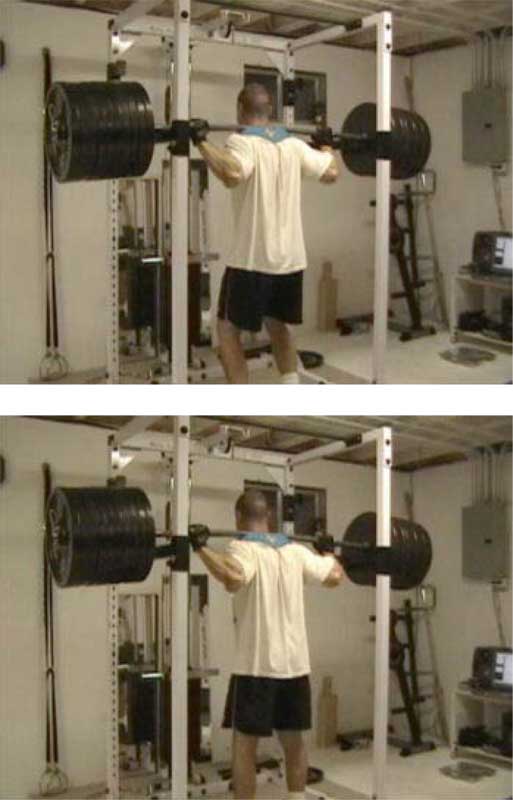

The granddaddy of the Partial Squat is the Lockout Partial Squat. This version allows you to use enormous weights, which can build incredible muscle mass, strength and density. It has the power to dramatically affect your entire body because of the amount of weight you can use..

This version is incredible for building power and density as well as connective tissue strength. It teaches you how to apply maximum power with your legs. It also helps to eliminate fear of heavy weight.
How to incorporate this exercise into your workouts:
Lockout Partial Squats should be done as the sole exercise on a leg day.
1. Not using enough weight
If you don’t use enough weight, you will be shortchanging yourself on results. You never know what you are capable of until you push yourself. Remember to always be aware of how your muscles and joints feel, of course.
2. Imperfect body position
It is absolutely imperative that you maintain perfect body position during this movement: back slightly arched, head looking straight forward, stomach sucked in and very tight. Remember, you will be having an enormous amount of weight on your back and any mistake in form will be amplified. Do not allow the bar to tilt or rotate. If you feel the weight slipping or sliding in any way, drop back down and rack the weight as quickly as possible.
1. Manta Ray
Use a Manta Ray (a molded plastic squatting device that fits on the bar and goes across your traps) for comfort. Do not use a towel or foam pad as they may slip. This piece of equipment is pretty much essential for really pushing the limits of how much weight you can comfortably use on the lockout partial squat.
2. Use thin plates
Use the thinnest plates you can find so you can fit more of them on the bar. This is very important once you start getting up to 9 or 10 plates on either side. Not all plates are created equal and some gyms have several types of plates you can use.
3. Make sure the bar is rated for extremely heavy use
If you do lockout squats with enormous weights, make sure the bar you use is rated to 1000 pounds or more and is thick. Thinner bars (some have a maximum capacity of 400 or 700 pounds) may acquire a permanent bend if used in this fashion.
4. Smith machine
Lockouts can also be done on the Smith machine if you are worried about balancing the bar. Don’t use the spinning hooks, though. Just set the stop-guards to where you want them and go from there. Be absolutely sure you plant your feet directly under the bar. You don’t want any sort of lateral-pushing, torqueing force on the bar. This would be very hard on the knees and lower back.
5. Freestanding
Doing these freestanding is possible but does make injury more likely if the bar slips a little. As you get more advanced doing this exercise, try doing them in the middle of the rack rather than pushing up against the supports.
6. One-legged
Lockout partials can also be done with one leg at a time. This makes them harder to balance. It is also good as a continuation of the two-leg lockout partial when you can’t fit any more weight on the bar.